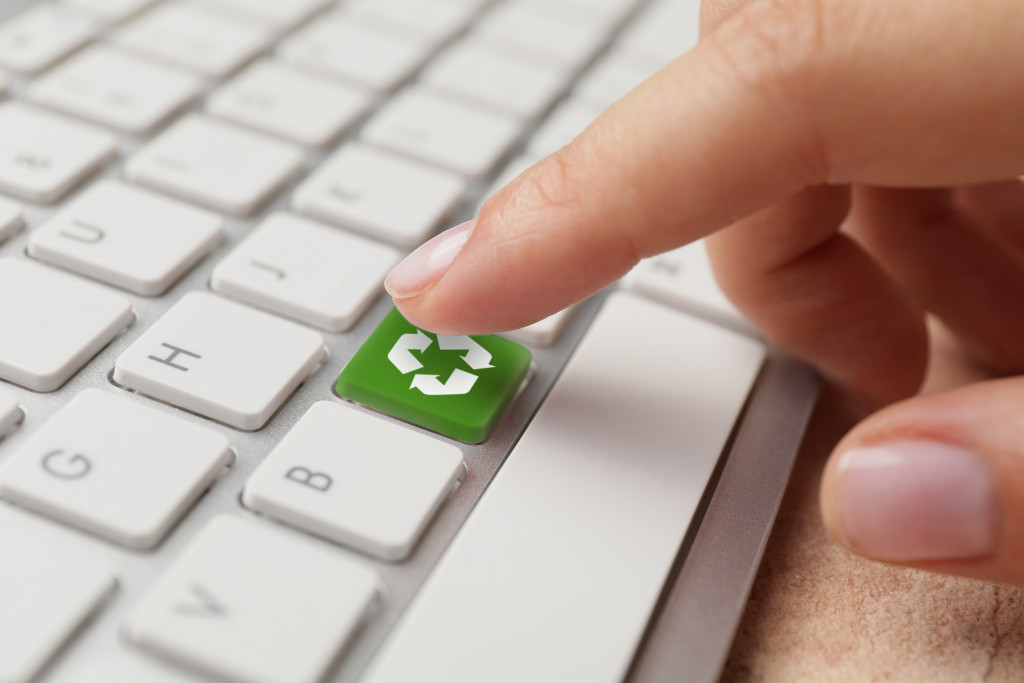• Upgrading existing equipment and systems, such as lighting and electricals, with energy-efficient technologies can help slash carbon emissions.
• Installing solar panels is a great way to reduce reliance on non-renewable sources of electricity and save money on utility bills.
• Replacing manual doors with automated ones can help prevent energy waste caused by forgotten lights and air leaks.
• Optimizing machines and introducing robotics can help streamline the production process while reducing errors and emissions.
• Moving towards reusable packaging materials can reduce your environmental impact and save on waste disposal costs.
As a business owner, you know the importance of being efficient and staying ahead of the curve. But what about the planet? In today’s world, you must be conscious of your ecological footprint and find ways to reduce your contributions to climate change. Fortunately, plenty of innovative technologies can help your business become more eco-friendly.
Upgrading Your System
One of the first steps to reducing your environmental impact is to upgrade your existing equipment and systems. Investing in energy-efficient electrical equipment will not only reduce your utility bills, but it’ll also help slash your carbon emissions. Here are the essential elements to upgrade:
Smart Lighting Systems
One way to reduce energy consumption is to upgrade your lighting system with smart technology. Smart light systems use motion sensors and timers to detect when someone enters or exits a room and adjust the lighting accordingly. This saves energy because it eliminates wasted power from lights that are left on needlessly.
It also ensures that lights will turn off automatically if they are forgotten. Smart lighting systems can be connected to smartphones or tablets, allowing you to control them remotely from anywhere in the world.
Installing Solar Panels
Upgrading to solar power is a great way to reduce your reliance on non-renewable energy sources. Solar panels are another great way to reduce your energy costs while helping the environment at the same time.
Solar panels soak up energy from the sun during daylight hours, which is then stored in batteries for later use. This eliminates the need for traditional sources of electricity, such as coal or natural gas, which contribute significantly to global warming when burned for fuel. Installing solar panels can save you money on electricity costs over time and help reduce your carbon footprint. It also allows tax credits, incentives, and other benefits local governments offer.

Replacing Manual Doors
Replacing manual doors with automatic ones is another great way to reduce energy consumption. Manual doors require a person to open and close them each time someone enters or exits the building, which wastes energy by letting out conditioned air while allowing hot air in. Manual doors’ friction also causes them to wear down quickly, leading to further energy losses.
On the other hand, easy-access automatic door operators use a motorized system that senses when someone is near and opens and closes accordingly. This eliminates the need for manual opening and closing of doors while also reducing air leaks.
Environment-Friendly Manufacturing
If you are operating a manufacturing business, you may be aware of the potential environmental damage of traditional manufacturing processes. With the help of modern technology, it is now possible to manufacture products much more eco-friendly way. Here are ways to stay on top of the innovation curve and keep your production eco-friendly:
Optimizing Machines
Optimizing machines for better performance is one way to make your manufacturing process more efficient. You can use machine learning, and artificial intelligence (AI) advances to help you monitor operational data and identify areas where energy can be conserved or eliminated entirely. It also helps by ensuring that machines run optimally, thus reducing energy costs and emissions.
Using Robotics and Automation
Robotics and automation can help streamline your production process, reduce errors, and increase output efficiency. Automated machines require less human oversight and fewer resources to run, reducing energy costs and the risk of environmental damage. Automated systems also generate data that can be used to improve processes to further reduce energy consumption and waste.
Introducing Reusable Packaging

It’s hard to go green when all your products are wrapped up in plastic packaging materials that end up in landfills after they’re discarded. The good news is that there are now many options for businesses looking to switch to reusable packaging materials instead of disposable ones.
Reusable packaging can come in many forms, such as fabric bags, and paper boxes that can be reused multiple times before they wear out or break down completely. This will lessen your environmental impact and reduce waste disposal costs over time.
Now is the right time to switch your business model to a more eco-friendly one! With the help of technology, you can reduce your environmental impact and create a more sustainable future. Investing in these technologies will save you money in the long run and help protect the planet for generations to come.

